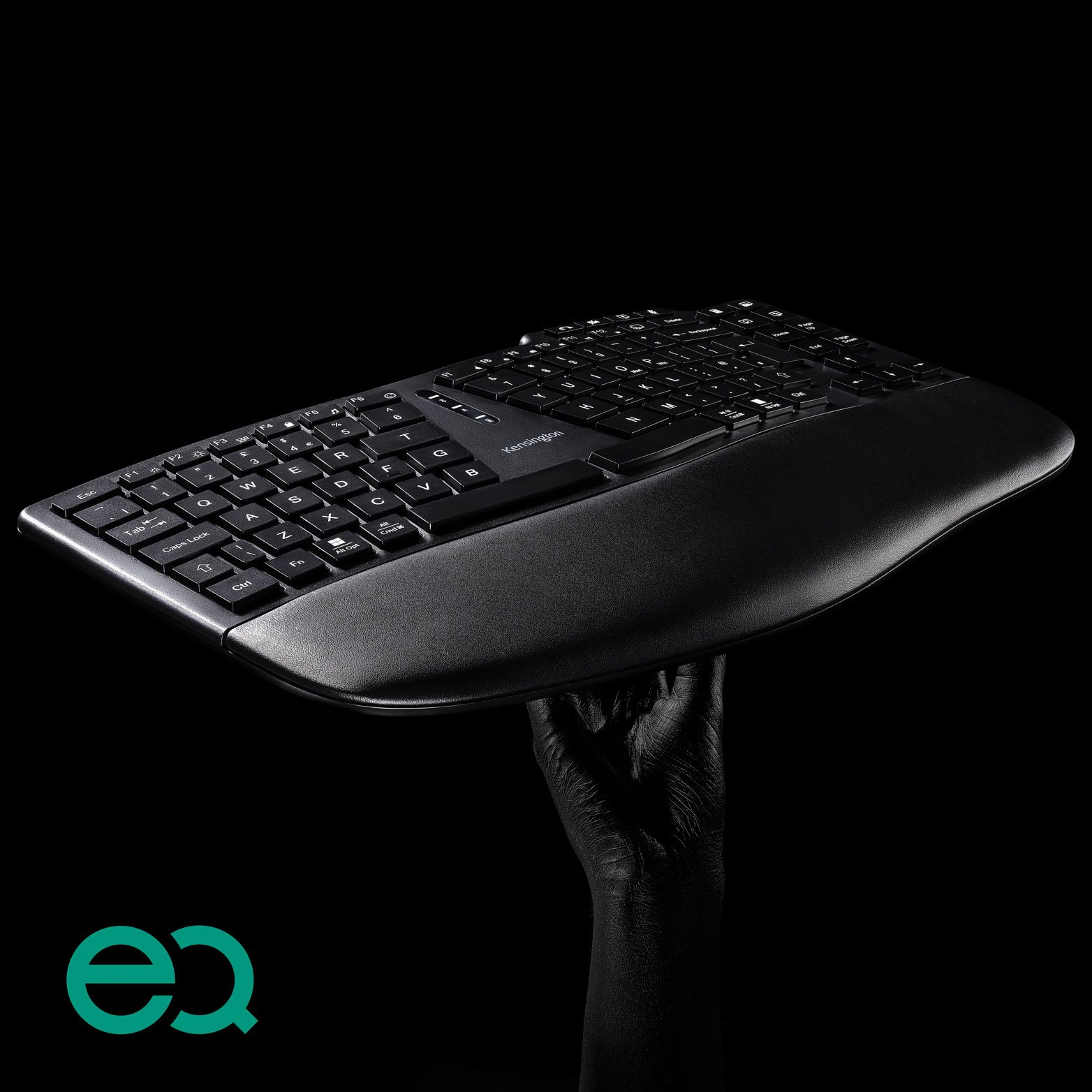Kensington EQ
Designed Using More Sustainable Materials

Designed Using More Sustainable Materials
Not all USB-C devices are created equal. While the new USB-C ports are very convenient, each manufacturer can set up each device model to support different levels of data, video and power. As such, compatibility with productivity accessories like the Kensington SD1500, SD4500 and SD4600P docks can vary.
USB-C is a new technology and, unfortunately, it’s also a complicated technology. Users need to ensure the accessory is compatible with their host device, and can’t assume all accessories will work seamlessly. When the host device’s USB-C capabilities are fully compatible with our docking station features, and all software on your host device has been updated, the performance should be nearly flawless.
Things to Know/Common Issues
A: To find out if your laptop is compatible with your USB-C accessory, you will need to understand the specification of the USB-C port on your laptop (This information will be available on your laptop manufacturer’s website or in the user manual that came with your laptop.)
A: No, not all USB-C ports are the same. Some computers may have USB-C ports that:
A: Yes, your USB-C cable will offer control, power and communication to your accessories
A: The laptop or tablet and the USB-C accessory do a “handshake” when connected to each other.
A: The reversible USB-C connector makes it easy to plug the cable for an accessory in either direction
A: Yes, all our USB-C devices included in the list below do not need software downloads or drivers when connecting to a host device using Windows and Chrome OS:
K33992WW – CA1000 USB-C to USB-A Adapter
K33995WW – CH1000 USB-C to 4-Port Hub
K33993WW - CV4000H USB-C to HDMI Adapter
K33994WW - CV2000V USB-C to VGA Adapter
K33969WW - SD1500 USB-C Mobile Dock
K38230WW – SD4500 USB-C Docking Station
K38231WW – SD4600P USB-C Docking Station with Power Delivery
Please note:
For Windows and Chrome OS, the docking stations are Plug & Play. The PC may start installing a driver for the peripherals attached through the dock (keyboard, mouse, etc.) during setup, but no driver is required for the dock itself.
For Mac OS, docking station users will need to install a driver for the Ethernet port. The one-time driver installation can be downloaded at software.kensington.com.
A: Yes, all our USB-C docks and adapters are compatible with laptops featuring a Thunderbolt 3 port.
Please note: The USB-C docks and adapters will not deliver Thunderbolt 3 data transfer speeds (40Gbps), only what the docking station or adpater supports (5 Gbps).
A: No, the dock only works with laptops, tablets and smartphones with a USB-C port that supports USB-C Alt mode.
A: USB-C Alt Mode allows devices to deliver video signals and USB data over a single USB-C cable. There is more than one variation of Alt mode. The most popular version is DisplayPort (DP), which is the version our docks support.
To ensure that your laptop or tablet will work with our dock, please check with the laptop/tablet manufacturer to ensure that your device supports USB-C Alt mode over DP. You should be able to find this information via your device manufacturer’s website, in the user manual technical specifications, or by contacting the manufacturer directly.
A: You will not be able to use the video ports (DP and/or HDMI). All other features of the dock will be functional.
Please note: In addition to video/graphic support, please remember that USB-C Power Delivery (PD) support will also depend on the specifications of USB-C port on your device.
A: No, the SD4500 and the SD1500 only support video, audio, USB, and Ethernet. The laptop/tablet will need to be powered separately while connected to the dock. If you require USB-C Power Delivery, please refer to further information on SD4600P.
A: The SD4600P supports Profile 4, or up to 60W.
Please note: In some instances, when the other USB ports on the dock are connected, the PD to your laptop/tablet may be reduced to 36W. This will still be sufficient, in most cases, to keep the PC running without draining the charge on the battery.
A: Up to two monitors on Windows devices. The Windows laptop/tablet must support DisplayPort v1.2 (DP) or above with compatible graphic cards. To ensure that your video will be optimal, please ensure that your graphics card, typically from Intel or AMD, is up to date. If you are having video issues, it typically can be resolved by downloading the latest graphics driver update from your device manufacturer. Please review the manufacturers’ manual/website or contact the manufacturer if you are unsure of the version of DP. When running dual screens, the resolution supported for each of the monitors is 4096x2160 @ 30Hz (4K resolution). For single display, the docks support 4096x2160 @ 60Hz (4K resolution).
For Mac and Chrome systems, they do not support dual monitors in extend mode. These PCs only support one extended monitor, but a second monitor can be used to mirror your laptop screen.
A: No, you cannot connect to an additional screen. This is because that particular USB-C port does not support a video connection. It does support a 15W (5V/3A) power specification for USB-C Power Delivery, so it is capable of data transfer and charging of a device, such as a smartphone or tablet with a USB-C port.
A: Yes, the front USB-A port supports standard battery charging capabilities of up to 2.1A and is capable of charging a smartphone or tablet. To achieve faster charging, you should plug in your mobile device before plugging the dock into the PC.
A: All the USB ports on the Kensington USB-C docks support USB 3.1 Gen 1 specifications at 5Gbps.
A: No, we can only guarantee the performance of the USB-C cable that ships with the dock. USB-C cables vary greatly between different manufacturers. We recommend that users contact Kensington Tech Support for replacement USB-C cables if needed.
USB 3.0:
USB 3.1 Gen 1:
USB 3.1 Gen 2: